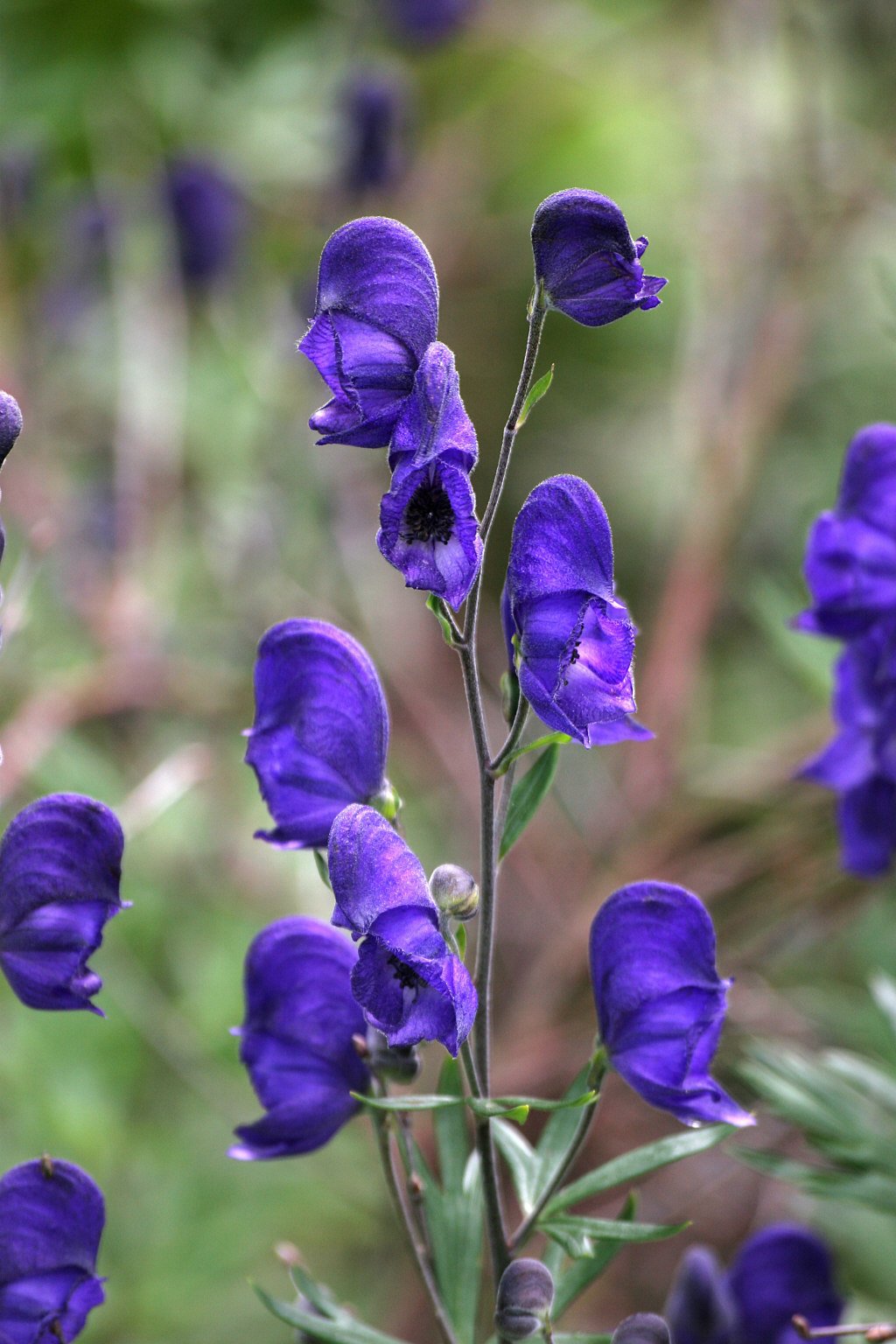Aconitum napellus
monk's hood
Upright, clump-forming perennial to 1.5m tall, with deeply divided, 5 to 7-lobed and toothed, dark green leaves, and tall, dense, spires of violet-blue, hooded flowers in mid and late summer
Other common names
Adam and Evebear's foot
see morecommon aconite
common monk's cowl
Cupid's cap
dumbledore's delight
Elijah's chariot
flapdock
friar's cap
garden monk's hood
garden wolf's bane
grandmother's nightcap
Helen flower
Helen's flower
helmet flower
monk's cap
monkshood
pops
soldier's cap
Turk's cap
Venus's chariot drawn by two doves
cwcwll y mynach
Synonyms
Aconitum ampliflorumAconitum napellus subsp. pyramidale
Size
Ultimate height
1–1.5 metresTime to ultimate height
2–5 yearsUltimate spread
0.1–0.5 metresGrowing conditions
Moisture
Moist but well–drained, Poorly–drainedpH
Acid, Alkaline, NeutralColour & scent
| Stem | Flower | Foliage | Fruit | |
| Spring | Green | |||
|---|---|---|---|---|
| Summer | Blue | Green | ||
| Autumn | Green | |||
| Winter |
Position
- Partial shade
Aspect
North–facing or West–facing or East–facing
Exposure
Sheltered Hardiness
H7Botanical details
- Family
- Ranunculaceae
- Native to GB / Ireland
- No
- Foliage
- Deciduous
- Habit
- Bushy
- Potentially harmful
- TOXIC if eaten, avoid skin contact. Wear gloves and other protective equipment when handling. Pets: TOXIC if eaten, avoid skin contact - see the HTA guide to potentially harmful plants for further information and useful contact numbers
- Genus
Aconitum can be herbaceous perennials or biennials with lobed leaves and racemes or panicles of showy, hooded flowers
- Name status
Correct
- Plant range
- Europe, Asia, America
How to grow
Cultivation
Grows best in deep, cool, moisture-retentive soil in partial shade, but will also tolerate most soils and full sun if soil is humus-rich and protected with mulch to ensure that it is moist throughout the growing season; use protective gloves
Propagation
Propagate by division in autumn or late winter to maintain vigour but plants may be slow to re-establish. Use protective gloves when handling any part of the plant
Suggested planting locations and garden types
- Cottage and informal garden
- Wildlife gardens
- Flower borders and beds
Pruning
No pruning required except cutting back dead stems; use protective gloves
Pests
Generally pest-free but may be susceptible to aphids
Diseases
May be susceptible to fungal stem rot, powdery mildews, and Verticillium wilt
Get involved
The Royal Horticultural Society is the UK’s leading gardening charity. We aim to enrich everyone’s life through plants, and make the UK a greener and more beautiful place.
